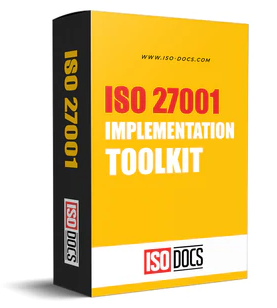Top 10 ISO 27002 Controls Every Business Should Implement
Introduction
While ISO 27002 contains many controls, some have a higher impact on organizational security. This article outlines ten critical 10 ISO/IEC 27001:2022 controls that are generally applicable to all organizations, regardless of size or industry. These are considered foundational because they address common security risks every organization faces:

-
Policies for Information Security (5.1): Policies for Information Security is one of the foremost controls any organization should implement in terms of ISO 27001. Every organization needs formal security policies that set the direction and framework for protecting information assets. Hence, the development and implementation of an Information Security Policy is a mandatory requirement in terms of ISO 27001 certification.
-
Threat Intelligence (5.7): Cyber threats have been increasing worldwide, with threat actors now employing a host of methods and tactics. Staying informed about emerging threats helps organizations of all sizes anticipate and manage risks effectively, hence the addition of this control in the 2022 versions of both ISO 27001 and ISO 27002. By practicing threat intelligence, an organization will place itself in a better position to deal with such threats before they affect the organization’s operations.
-
Configuration Management (8.9): Configuration Management is a key control to ensure the security of an organization. Various research has confirmed that security misconfigurations are one of the top vulnerabilities that lead to cyber-attacks year in and year out. Therefore, keeping systems in secure, approved configurations reduces vulnerabilities in very important in enhancing an organization’s overall security posture. This should cover all infrastructure from laptops to servers.
-
Data leakage prevention (8.1): Data leaks have caused untold damage to many organizations worldwide, especially from a regulatory compliance perspective. Controlling and monitoring the movement of sensitive data is essential to prevent accidental or intentional disclosure and to prevent legal hurdles, especially from the victims.
-
Access control (5.16): This control establishes rules to control physical and logical access to information. It states that associated assets shall be established and implemented based on business and information security requirements. ISMS Access control includes enforcing least privilege and regular access reviews, as well as cryptography, which helps in deterring unauthorized access. This makes it one of the most critical controls that every organization must implement.
-
Information security in Supplier relationships (5.19): The purpose of this control is to enable the organization to establish and maintain processes and procedures to manage the information security risks associated with the use of suppliers’ products or services. Supplier relationships are a major source of attack vectors and therefore require risk assessments as well as security clauses in the supplier contract. This control is therefore fundamental in protecting sensitive data and achieving compliance with ISO 27001.
-
Information security management planning and preparation (5.24): Despite how strong and sophisticated the organization’s controls are, incidents frequently do happen. The purpose of Control 5.24 is to enable organizations to establish procedures for detecting, reporting, and responding to security incidents. The control is quite critical, including having an incident response team for post-incident activities.
-
ICT readiness for business continuity (5.30): Just like the incident above, disasters happen, and in most cases, organizations are caught unaware. This control requires the organization to ensure that ICT readiness for business continuity is planned, implemented, maintained, and tested based on business continuity objectives and ICT continuity requirements. This helps to ensure that security is integrated into business continuity and disaster recovery plans, which is critical in any organization.
-
Monitoring Activities (8.16): The importance of security monitoring in any organization can never be overemphasized. Often attacks happen because the operating and security environment is not properly and effectively monitored. This control ensures that infrastructure is continuously monitored for anomalous behaviour and appropriate actions are taken to evaluate potential information security incidents. Logging and monitoring systems can effectively help detect anomalies or incidents early, improving security response across any organization.
- People Controls (6 Series): All the controls in this section are very crucial in any organization. These controls deal with people issues such as security awareness training, background checks, clear roles and responsibilities, and disciplinary policies, and help organizations reduce human-related risks. This is key since it is agreed within the information security fraternity that humans are the weakest link in the security chain.
Conclusion
The above-cited and explained controls should be part of the control architecture of every organization, regardless of size, sector, and complexity of operations. This is because such controls are cross-cutting and pervasive in nature. Security and business leaders should therefore ensure these controls are implemented, observed, and improved on an ongoing basis to continually enhance the security posture.


